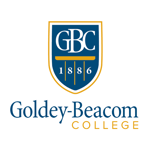The Future of Enrollment Growth
in U.S. Higher Education
Hybrid Professional Programs
For International Students
-2.png?width=675&height=675&name=Copy%20of%20Copy%20of%20Day%201%20CPT%20(1)-2.png)
At GoElite, we help US higher institutions to tailor make their hybrid professional programs for international students and assist them with reaching the enrollment goal. On the page, we are going to explain how this type of program is set up, why they matter now more than ever, and how institutions can successfully implement them to boost enrollment, diversify student demographics, and remain compliant with immigration and accreditation requirements.
What Are HPP (Hybrid Professional Programs)?
HPP are graduate-level programs that allow students to work full-time while attending school. These programs:
-
Offer flexible formats (majority online + required in-person sessions)
-
Serve international students who want to gain work experience in the U.S. via CPT from the first semester
-
Are offered in fields like business, tech, and healthcare with the majority of them are STEM certified
-
Integrate career development directly into the curriculum
By allowing F-1 students to begin CPT from their first semester, these programs provide immediate work authorization, creating a unique value proposition.
Why Are They Important?
The higher education sector in the United States is experiencing a significant structural shift. Faced with declining domestic enrollment, increasingly complex international student dynamics, and mounting financial pressures, many universities are exploring innovative ways to remain sustainable and competitive.
Since 2019, US undergraduate enrollment has dropped by over 7%, with the National Center for Education Statistics reporting a steady 1.5% annual decrease since 2011. Several factors contribute to this trend: a growing skepticism about the return on investment of a college degree, the burden of student loan debt now totaling $1.77 trillion, the emergence of alternative education paths like coding bootcamps and job-ready credentials, and a shrinking pool of high school graduates, an aftereffect of the 2008–09 recession.
Employment outcomes for college graduates are also shifting. Nearly 40% of recent graduates are underemployed, meaning they work in jobs that do not require a college degree. Moreover, unemployment rates among graduates aged 22 to 27 exceed the national average. These outcomes contribute to a broader erosion of public confidence in the value of a traditional four-year degree.
Compounding these challenges is a reduction in public funding for higher education. More than 30 states allocated less money to public universities in 2020 than they did in 2008. This financial shortfall has forced institutions like Arizona State University to close regional campuses, highlighting the fragile state of public support for higher education.
International student enrollment, once a financial lifeline for many universities, is also faltering. Geopolitical tensions, inconsistent immigration policies, and high visa rejection rates have led to a significant decrease in students from major source countries like China and India. Between 2020 and 2022, visa approvals for Chinese students fell by more than 50%, while Indian student visa issuances dropped 38% in 2024. In March 2025, SEVIS data revealed a year-over-year loss of over 130,000 international students — an 11.33% decline.
In response to these pressures, many universities are turning to online or hybrid programs as a strategic solution, with fully online programs targeting domestic working professionals, and the hybrid program as an adaptation of the online program targeting international students who already reside in the U.S. These programs offer flexibility, allowing students to gain work experience while studying.
This career oriented education model enables universities to attract and retain students while adapting to the evolving demands of both the education landscape and the job market. At GoElite, we specialize in recruiting international students and have actively recommended the hybrid graduate program format to many of our partner institutions. With a few strategic adjustments to program structure, our partner schools have successfully expanded their target audience from solely offshore applicants to include students already residing onshore in the U.S. This shift has opened up an entirely new market segment and has significantly boosted their enrollment.

Talk with one of our HPP experts
Our insights are grounded in real-time student data and ongoing collaboration with leading institutions.
Why HPP is an Innovative Enrollment Solution for US Universities?
Why HPP is an Innovative Enrollment Solution for US Universities?
CPT Compliance
To offer CPT from the beginning of the program:
-
Programs must require work-integrated learning (e.g., internships, practicums)
-
Students must receive authorization from a Designated School Official (DSO)
-
CPT jobs must be directly related to the field of study
Curriculum Format
To stay compliant with SEVP and USCIS:
-
Only one online class per term is permitted
-
Programs must include regular on-site components (e.g., one weekend or 3-day residency per semester)
DSO Role
DSOs are responsible for:
-
Issuing CPT-authorized I-20s
-
Verifying employer information
-
Ensuring ongoing compliance
-
Monitoring attendance for required on-campus sessions
Institutional Success Stories
In recent years, many U.S. universities have struggled with declining domestic enrollment and tightening budgets, prompting them to explore alternative strategies for sustainability and growth. Harrisburg University is one such institution that found a path forward through the implementation of hybrid program with CPT options. HPP has played a transformative role in Harrisburg’s rapid enrollment growth and financial stability. By offering flexible hybrid graduate programs tailored to international professionals already working in the U.S., the university tapped into a strong demand from students seeking to maintain legal status while continuing their careers. This model allowed Harrisburg to attract thousands of international students who might not have otherwise considered the school. The resulting surge in enrollment brought in substantial tuition revenue, helping the institution scale operations and expand visibility well beyond its Pennsylvania base.
According to the SEVIS By the Numbers report, Trine University, a non-profit private institution based in Indiana, had only about 600 international students in 2018. However, by 2023, that number skyrocketed to 9,635, largely due to the success of its Hybrid Professional Programs (HPP). The vast majority of these students are now enrolled in HPP offerings rather than traditional graduate programs, highlighting a dramatic shift in the university’s international enrollment strategy.
California Institute of Advanced Management (CIAM), a small institution in Alhambra, California with a focused selection of academic programs, experienced significant growth in international enrollment after partnering with GoElite. By working together to enhance and optimize CIAM’s Hybrid Professional Program (HPP), the school saw a 156% increase in international student enrollment between 2023 and 2024, marking a major milestone in its global outreach and program impact.
New England College, Sofia University, and Monroe College have also embraced flexible, CPT-eligible program structures and have achieved impressive enrollment outcomes as a result. The data from SEVIS By the Numbers, spanning 2018 to 2023, highlights the enrollment growth at institutions that have implemented Hybrid Professional Programs (HPP), showcasing the strong impact of this model on attracting international students.

Talk with one of our HPP experts
Our insights are grounded in real-time student data and ongoing collaboration with leading institutions.
Best Practices for Building a Hybrid Executive Program
Through our collaboration with multiple US universities in successfully launching and refining Hybrid Professional Programs (HPP), we've identified several best practices that have proven highly effective. Of course, these insights represent just the tip of the iceberg. If your institution is considering developing an HPP, we invite you to schedule a free consultation with us—we’d be happy to share our experience and explore how we can support your goals.
🎓 Offer High-Demand Majors
Focus on MBA, MSCS, MSIT, Healthcare, and Data Science.
📅 Provide Multiple Start Dates
Open enrollment 4–6 times/year to accommodate post-OPT and post-layoff timelines.
🧭 Strategically Locate Campuses
Offer in-person sessions in metro hubs like LA, NYC, or Houston.
💵 Flexible Tuition Options
Offer monthly payment plans and streamlined billing.
🏫 Reduce On-Site Burden
Semester-based in-person classes are preferred over monthly visits.
GoElite: Your Strategic Partner in Program Development
GoElite has helped over 20 U.S. institutions build and expand CPT-eligible hybrid executive programs. We specialize in:
-
Curriculum design aligned with SEVP compliance
-
Student lifecycle strategy, from inquiry to graduation
-
DSO training and CPT documentation processes
-
Market research and onshore student acquisition
-
Collaboration with schools to open new campuses or launch new programs
📌 Our insights are grounded in real-time student data and ongoing collaboration with leading institutions.
Final Thoughts
As U.S. universities face an increasingly competitive enrollment landscape, hybrid executive programs present a powerful opportunity. They align with student visa needs, deliver real-world work experience, and create new revenue streams without increasing dependence on unpredictable international recruitment pipelines.
Hybrid executive programs aren’t just a short-term fix—they’re a forward-thinking model for sustainable growth.
👉 Ready to Rethink Your Enrollment Strategy?
We can help your institution design a compliant, career-aligned hybrid executive program tailored to your goals. Contact GoElite today to learn how we can support your team with:
- Program design consulting
- Market trend data
- DSO training
- Custom CPT structures
Talk with one of our HPP experts >
How We Help You Succeed
Data-Driven Targeting
We combine enrollment data, audience behavior insights, and program positioning to ensure your recruitment goals are met with precision and efficiency.
Strategic Partnership
We treat every university relationship as a strategic collaboration—working closely with your admissions, marketing, and leadership teams to align on outcomes and deliverables.
Student-Centric Approach
Our in-house team ensures your programs are promoted with accuracy, cultural nuance, and a strong value proposition—building trust with students and encouraging the right-fit applicants.
Highlight GoElite Exclusive Institutions







Book a Meeting to Learn More
Connect with Our BD Team
+1 (929) 317-7317
Online Meeting
Click here to book a meeting
Phone Call
+1 (929) 317-7317
christina@goelite.us
GoElite News and Industry Insights
.jpg)
F2GC: Guiding International Talent from F-1 to Green Card with Clarity and Confidence
.jpg)
Strengthening Partnership and Strategic Alignment at the CIAM Luncheon
-Nov-11-2025-03-22-53-4639-AM.jpg)
Introducing Optimize: A Free, All-in-One OPT & Immigration Tracking Tool by GoElite
.jpg)